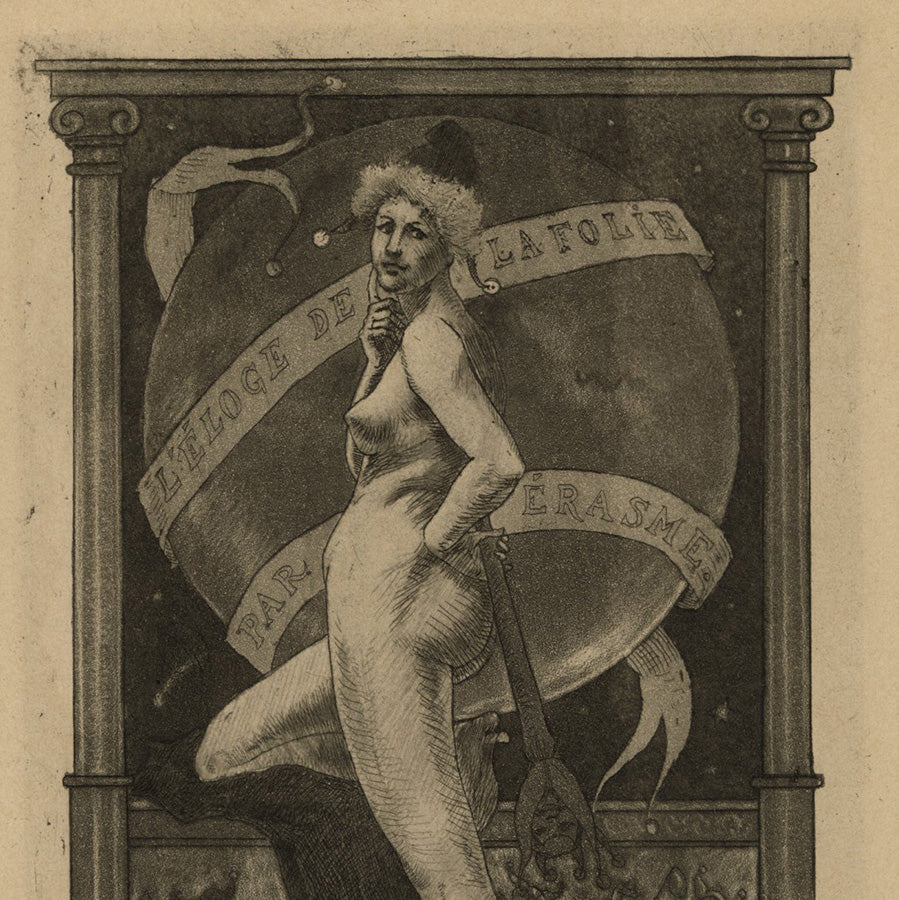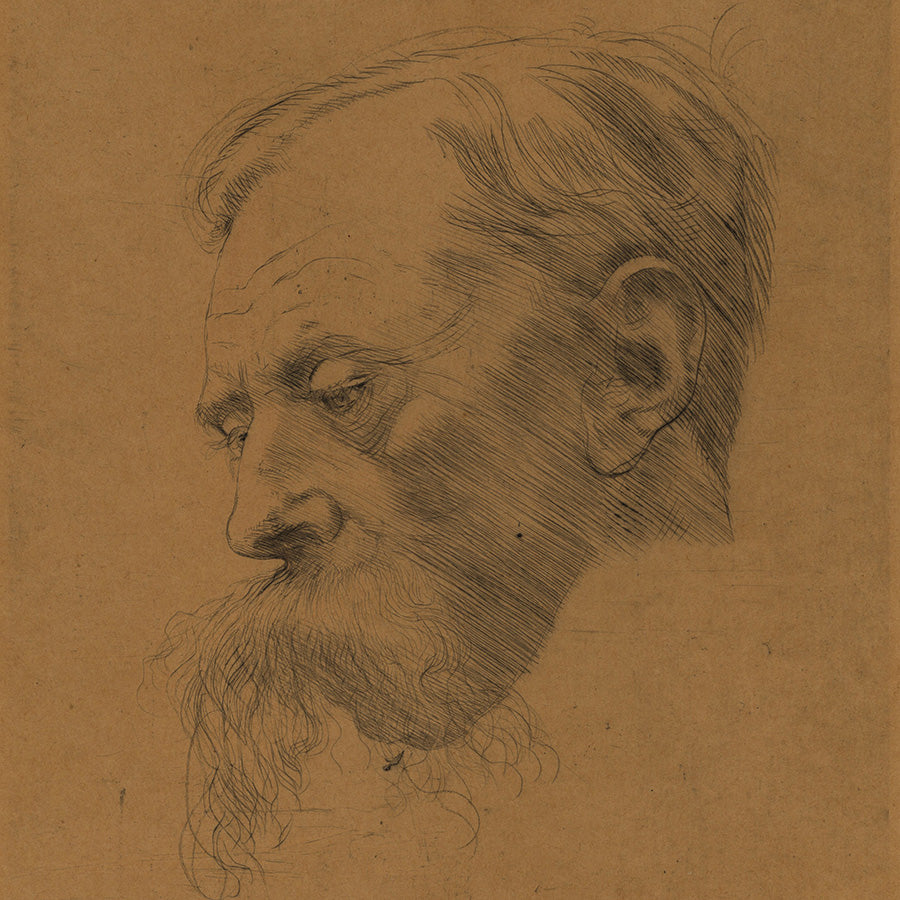
Frontispiece Essay for « In Praise of Folly”
RASSENFOSSE, Armand
Essai de Frontispice pour « l’Eloge de la Folie » (original French title) Aquatint and etching on simili-japon paper, circa 1896.Reference: Rouir 6...
View full detailsArmand Rassenfosse (1862-1934) was mostly self-taught, but befriended many artists over the years, likely picking up ideas, technical skills, and overall artistic wisdom along the way. Born in a bourgeois family from Liège in Belgium, Rassefosse was forced to join the family business, a home furnishing store, after completing high school. But from his late teens onward, the young man spent time drawing and there are traces of early work from around age 20. Attracted to the work of fellow Belgian artist Félicien Rops, Rassenfosse picked up the rudiments of etchings, which was also a favorite technique of Rops, before meeting his idol in Paris around age 25. From his late twenties on, he became a professional artist, mostly active as an etcher, illustrator, and painter. His oeuvre centers around the femme fatale: women who beguile with their sensual appeal. Rassenfosse depicted women in various states of undress and in all manner of poses. While some of these depictions tend toward the morbid, unlike his lifelong friend Rops, Rassenfosse shows a clear adulation for the female form, which he depicts with admiration and a keen eye for beauty. His mixed intaglio technique, using aquatint, etching, drypoint, crayon-manner and soft-ground in varied combinations, is extremely refined. He is one of the unequivocal masters of grayscale in intaglio, and many of his prints looks like sophisticated pencil drawings.

Essai de Frontispice pour « l’Eloge de la Folie » (original French title) Aquatint and etching on simili-japon paper, circa 1896.Reference: Rouir 6...
View full details
Portrait d’Emile Verhaeren (original French title) Drypoint with touches of pencil on tan wove paper.Reference: Rouir 643.First state of six, befor...
View full detailsPlease sign up for our newsletter
Email: info@armstrongfineart.com
Phone: 773-887-6776
1200 West 35th Street, #186
Chicago, IL 60609
Copyright © 2025 Armstrong Fine Art.
Development by Alo Agency. Powered by Shopify
